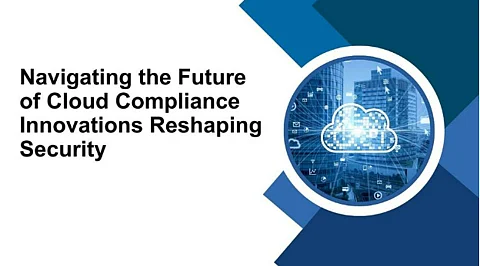

Revolutionizing digital security, cloud compliance is undergoing a transformation driven by automation, artificial intelligence, and enhanced regulatory frameworks. The rapid adoption of cloud technology has introduced both unprecedented opportunities and complex regulatory challenges for organizations worldwide. Meghana Orugunta, an expert with expertise in cloud security and compliance, delves into the evolving landscape of cloud governance, highlighting cutting-edge innovations that are reshaping security frameworks.
With regulatory standards like GDPR and HIPAA imposing stringent data protection requirements, businesses are increasingly turning to automated compliance solutions. Modern compliance monitoring tools utilize artificial intelligence and machine learning to scan vast datasets, identify anomalies, and ensure adherence to regulations. Organizations deploying automated compliance solutions have reported a 67% improvement in response times to security threats, reducing the risk of costly breaches.
Cloud compliance is not a one-sided obligation; it operates on a shared responsibility model where both cloud service providers and customers play crucial roles. While providers secure infrastructure, users must implement robust access controls and data encryption strategies. Research indicates that companies that thoroughly understand and execute this model experience 47% fewer security incidents. Advanced identity and access management solutions have been instrumental in mitigating risks by ensuring that only authorized users have access to sensitive data.
One of the most significant advancements in cloud security is the integration of AI-driven predictive analytics. These systems assess real-time security data to forecast potential compliance violations before they occur. AI-driven tools analyze an average of 12.4 trillion log entries per month, effectively reducing false positives by 76% and enhancing organization’s ability to act preemptively against emerging threats.
Encryption has become a cornerstone of cloud security, with 92.7% of organizations implementing it for data protection. End-to-end encryption ensures that sensitive information remains unreadable to unauthorized entities. Additionally, automated encryption key management systems have significantly reduced the risk of data exposure by enabling organizations to rotate encryption keys regularly, maintaining a high level of security resilience.
With 89% of enterprises operating in multi-cloud environments, maintaining consistent security controls across platforms remains a challenge. Organizations are increasingly adopting Cloud Security Posture Management (CSPM) tools, which scan cloud configurations in real-time to detect misconfigurations and compliance deviations. Companies using CSPM tools report a 41% reduction in cloud-related security incidents, demonstrating their effectiveness in enhancing compliance.
Traditional compliance audits, conducted annually or quarterly, are no longer sufficient in today’s fast-evolving threat landscape. Continuous compliance auditing has emerged as a best practice, where automated systems regularly evaluate security policies and generate reports on compliance adherence. This approach not only minimizes the risk of non-compliance but also streamlines audit preparation, reducing time spent on manual documentation by 73.4%.
As regulatory requirements become more complex, the industry is shifting towards Compliance-as-Code (CaC), where compliance rules are embedded into cloud infrastructure through automated scripts. This ensures that security policies are enforced consistently across all deployments. Additionally, the adoption of scalable security frameworks allows organizations to adjust compliance strategies dynamically as new regulations emerge.
Certainly, human elements should not be overlooked along with tools of compliance. Employees trained in security protocols, on the contrary, will demonstrate drops in compliance violations. Interactive learning modules, practical training runs on security, and routine compliance drills will help reinforce best practices among employees. Research has shown that compared with peers with minimal employee education efforts, those companies that conduct regular training in the area of cybersecurity saw 30% less breaches in security compliance.
Apart from providing security advantages, innovations in the area of compliance can confer financial benefits. Appropriate compliance measures can also improve operational efficiency by making the security processes less cumbersome and redirecting efforts from redundancy. In a nutshell, companies that possess good compliance frameworks enhance the reduction of legal liabilities and avoid heavy regulatory fines. Also, an organization that adopts compliance as its principle will win customer trust and show reliability, which becomes a competitive advantage. Therefore, compliance investments will continue to grow, with the organizations now committing larger portions of their IT budgets towards advanced security solutions.
In conclusion, the methods of compliance shall also embrace pace with cloud technology. According to Meghana Orugunta, the organizations which emphasize proactive compliance measures, adoption of AI-based security solutions, and automation, will find it very easy to navigate through the dynamic regulatory terrain. The innovations would enable compliance, enhanced security, operational efficiency, and customer trust improvement for businesses.
